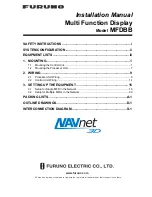
Troubleshooting
English, Revision 03, Date: 20.11.2015
39
8
Troubleshooting
The following table contains a list of errors that might occur. For each error, a symptom
description is given. In the third column you will find a description of how to locate and
possibly correct the error.
If you should not be able to correct an occurring error, please use the table below to
locate the source of the error as exactly as possible (nature of malfunction, at which
point of time did the error occur, etc.) before contacting us.
Error
Possible cause(s)
Diagnosis/correction
No function.
-
Power supply not sufficient.
Is PWR LED lit?
No connection can be
established. (CAN)
1. CAN_H and CAN_L inverted.
2. Signal ground not connected,
potential difference between
interpreter and receiver being
too high.
3. Wrong transmission parameters
set.
4. No terminator.
1. Control the connections.
2. Connect the signal grounds.
3. Choose the right parameter
using the monitor program (see
section 5.1 on page 12).
No connection can be
established. (Profibus)
1. Bus A and Bus B inverted.
2. Signal ground not connected,
potential difference between
interpreter and receiver being
too high.
3. Wrong transmission parameters
set.
4. No terminator.
1. Control the connections.
2. Connect the signal grounds.
3. Choose the right parameter
using the monitor program (see
section 5.1 on page 12).
No values for distance
presented in spite of
guide wire.
1. Wrong frequency is chosen.
2. Threshold set too high.
Set the correct frequency and lower
the thresholds (see 5.1 on page 12)
Distances are displayed
inexactly.
1. No position calibration.
2. Reading heights wrong.
Process a position calibration using
the monitor program (see section
5.1 on page 12) respectively correct
the reading heights.
Table 48
Troubleshooting











































